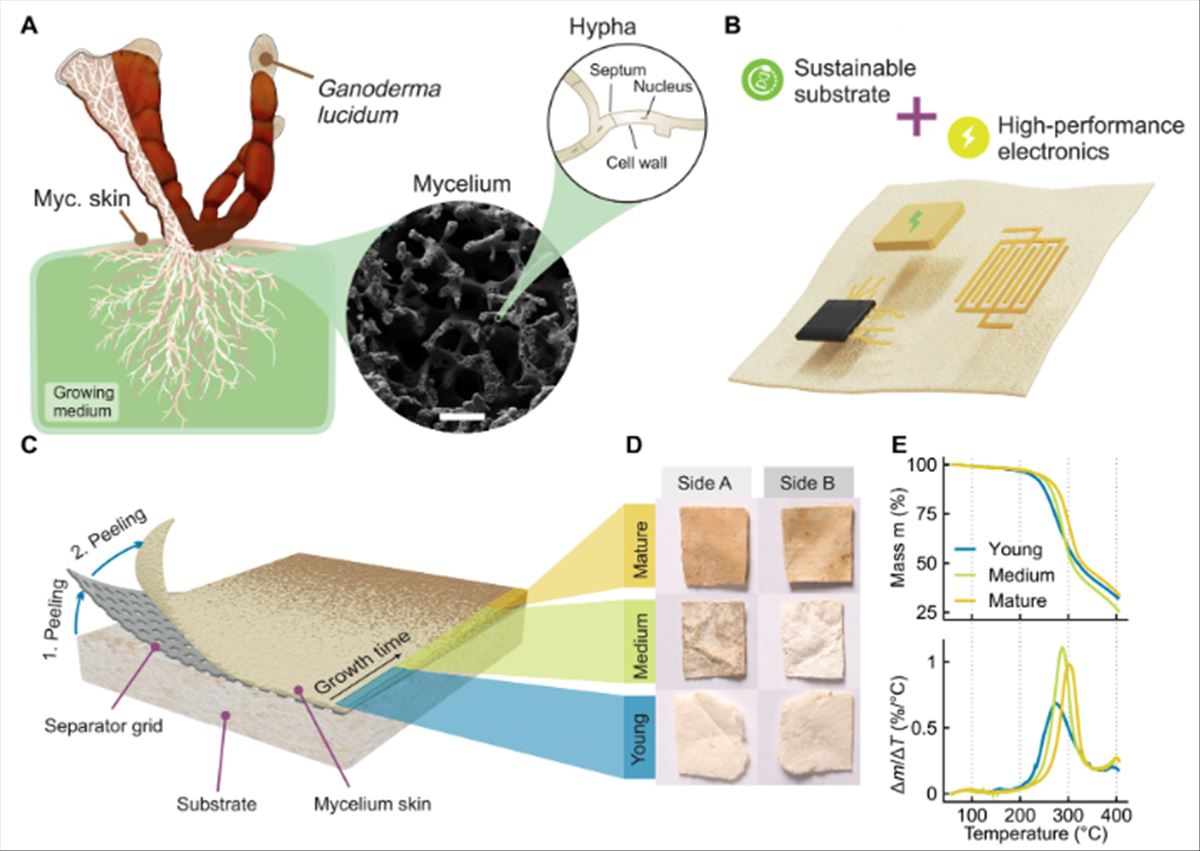Innovation in technology never stops and with it new problems arise, one of them is the management of electronic waste. Electronic chips contain non-recyclable plastics that account for 37% of their weight and are a major contributor to electronic waste. But what if I told you that scientists have found a way to replace these plastics with mushrooms?
A team of researchers at the Johannes Kepler University in Austria has discovered that Ganoderma lucidum, an easy-to-grow species of fungus, can be used as a biodegradable material for the base of electronic chips. The result is a chip that is not only greener but also performs well.
The problem of non-recyclable plastics
To understand the innovation behind biodegradable electronic chips, it is important to understand the problem of non-recyclable plastics. These plastics are found in the base, or substrate, of electronic chips and account for a large amount of their total weight. Also, these plastics are not recyclable and end up in landfills where they emit CO2 for hundreds of years.
The idea of using fungi to create electronic chips may sound strange, but these organisms have properties that make them ideal for this application. Ganoderma lucidum, the mushroom used in this project, is easy to grow and its skin can be used as a base for electronic chips.
Properties of the Ganoderma lucidum mushroom
The skin of the Ganoderma lucidum is an excellent insulator and conductor, making it an ideal base for electronic chips. In addition, it can withstand temperatures of up to 200°C and is very resistant, being able to bend up to 2,000 times without being damaged.
Another advantage of the mushroom is that it is biodegradable, which means that it does not have a negative impact on the environment. When discarded, it biodegrades in any soil in less than two weeks.
future applications
The research team in Austria believes that the mushroom-based electronic chips could be used in low-power wearable devices, such as proximity and humidity sensors, or wearables. The skin of the mushroom can also be used as a battery and casing separator, which could lead to a new generation of greener batteries.
The innovation behind biodegradable electronic chips is proof that the technology can be sustainable. As we move into a more digitized world, it is important to consider the environmental impact of our electronic devices. This project not only reduces e-waste, but also demonstrates that there are sustainable solutions to today’s technological problems.
